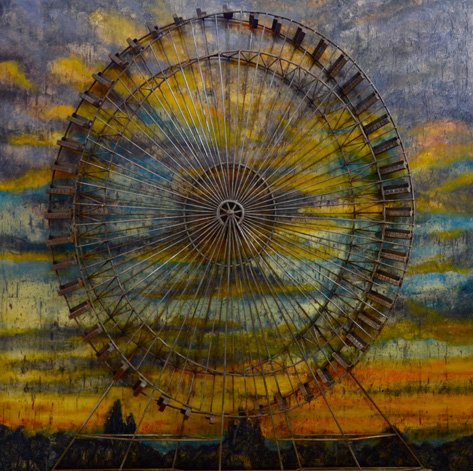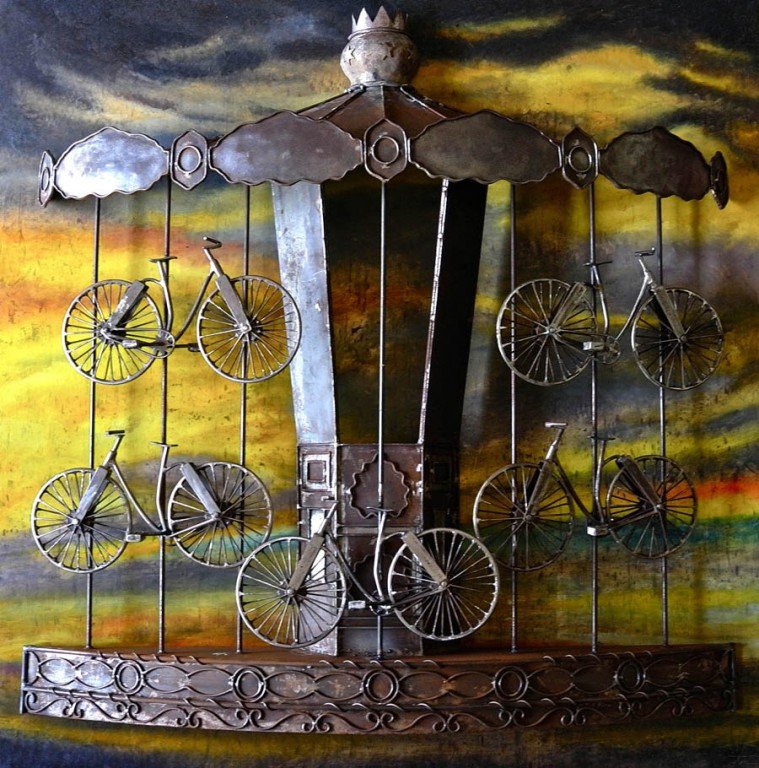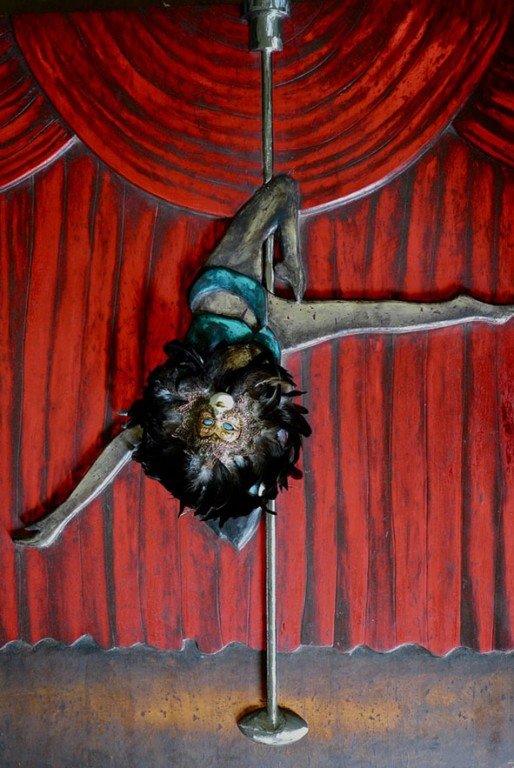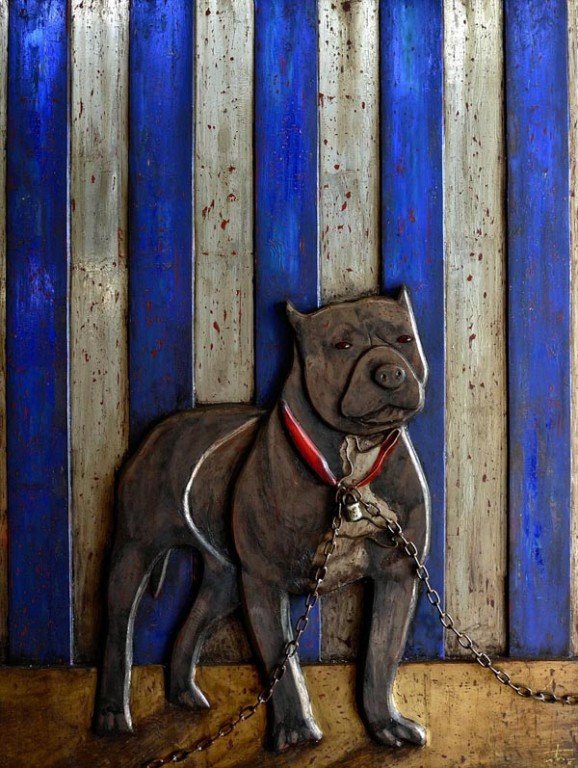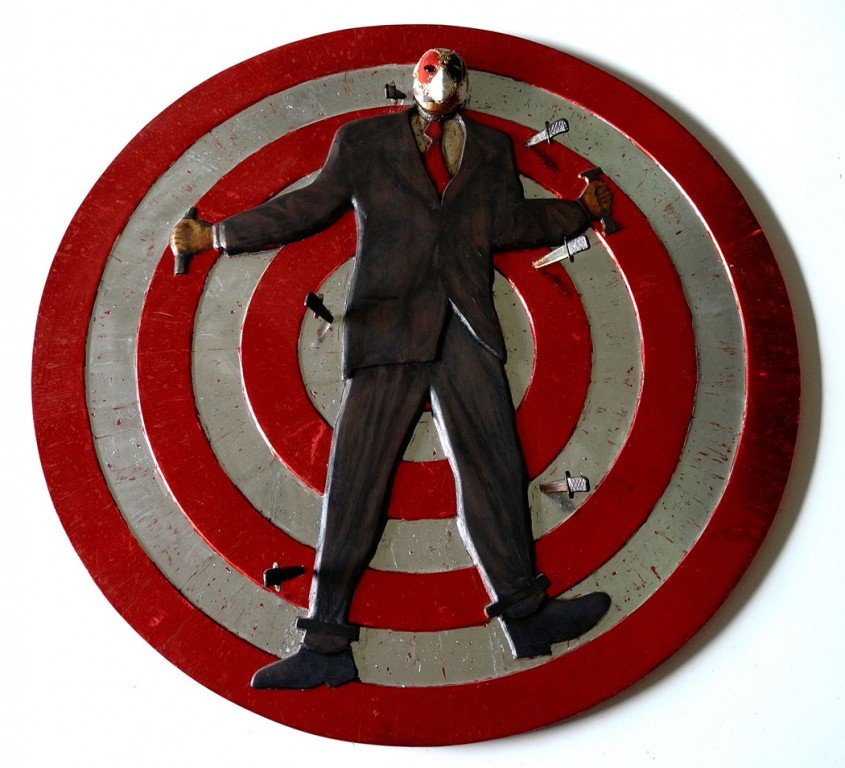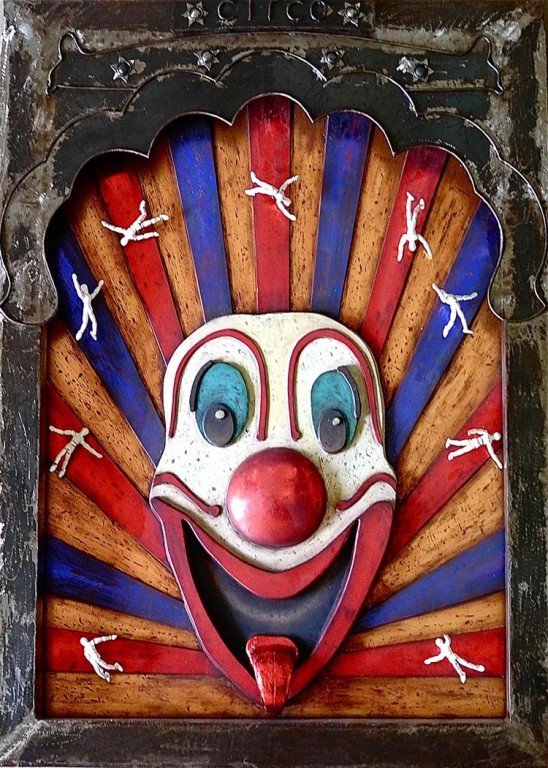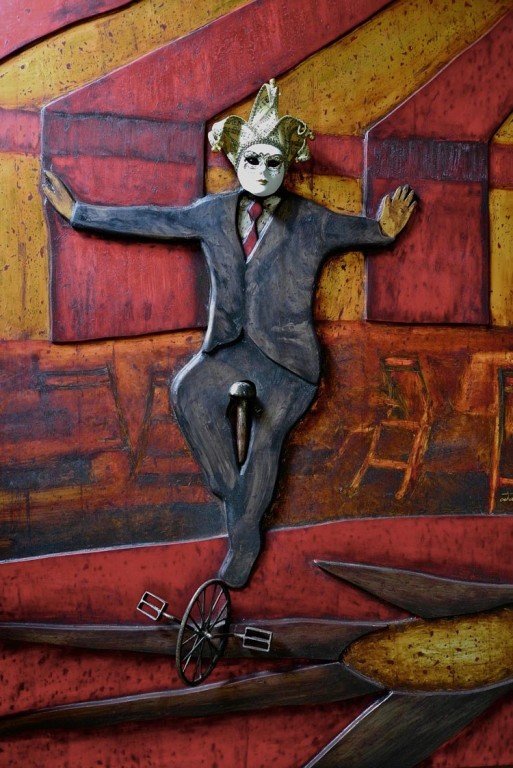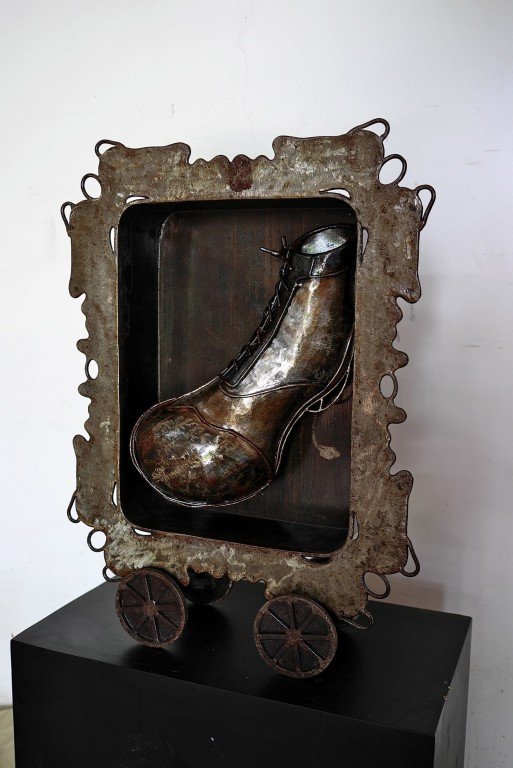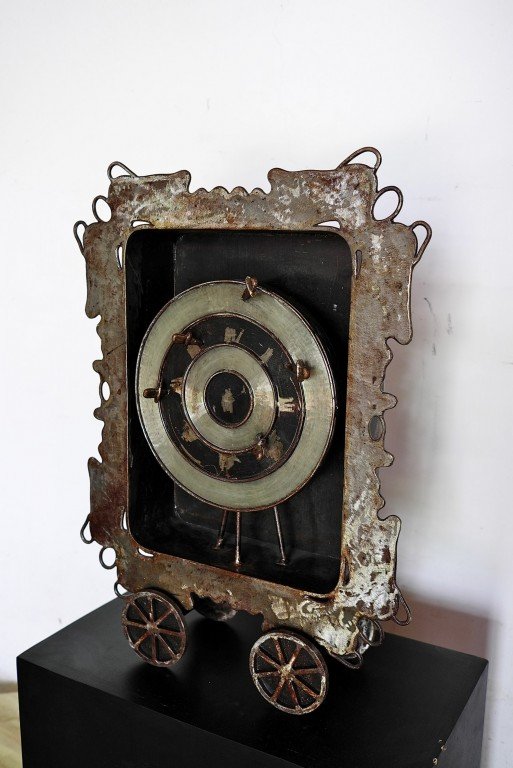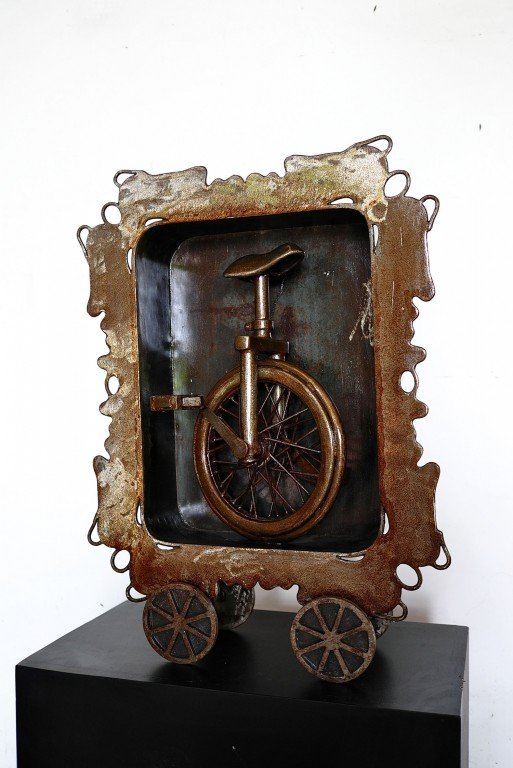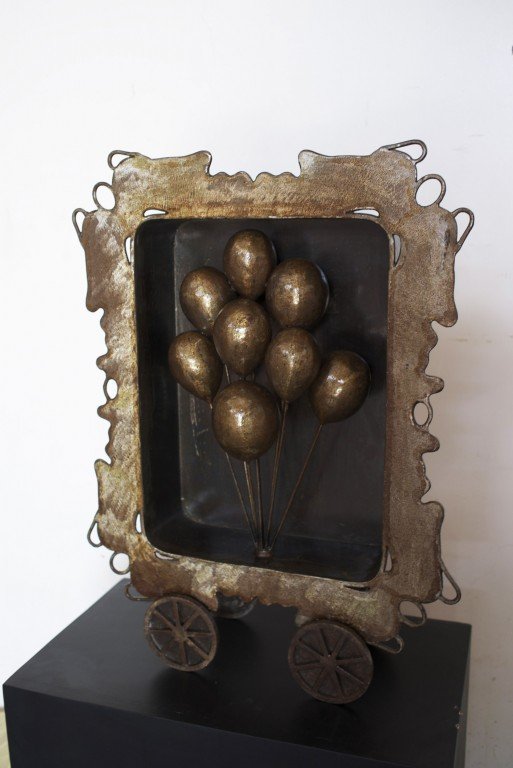Unwanted Fate
Allan Popa
The carnival celebrated temporary liberation from the prevailing truth and from the established order; it marked the suspension of all hierarchical rank, privileges, norms and prohibitions. Carnival was the true feast of time, the feast of becoming, change, and renewal. It was hostile to all that was immortalized and completed.
— Mikhail Bakhtin
Everyone is holding on for dear life.
— James McMichael
All the human figures in Anton del Castillo’s Unwanted Fate series are masked. They are marked by their actions and the tools of their trade as archetypal circus characters, yet there seems a need to hide behind another anonymous face. This constant juxtaposition of two states of namelessness in a single person creates an eerie, yet tantalizing, experience for the viewer. As we watch them put their lives in the cusp of danger they appear to be staring back at us from an indeterminate place beyond the frame.
The shape that pervades the artworks in this show is the circle: the path of juggles in the air, spinning wheels with daggers, an ornamented ball, the mouth of a cannon, tethered balloons, a unicycle, a ferris wheel, and a carousel. What is implied is the idea that circus acts and objects associated with the circus trace or conform to a circular pattern. As acrobats, jugglers, daredevils, tightrope walkers, and animal tamers put their lives in harm’s way, as we mount circus rides, we are allowed to witness or experience simultaneously the palpable thrills of life and the nearness of death, which shape the circular path of our fate.
Fate 1: the will or principle or determining cause by which things in general are believed to come to be as they are or events to happen as they do : destiny. 2 a : an inevitable and often adverse outcome, condition, or end b : disaster; especially : death. 3 a : final outcome b : the expected result of normal development c : the circumstances that befall someone or something. 4 plural capitalized : the three goddesses who determine the course of human life in classical mythology.
As the circus show unfolds we sit awe-struck on the edge of our seats. The riskier the act, the more amused we are. And in spite of being mere spectators, we are somehow rescued from phantom dangers each time a circus performer survives and completes an act. The circle closes. We heave a sigh of relief. Something in us is purged.
Del Castillo’s carefully chosen subjects are held in suspension as their lives hang in the balance: a man and a woman strapped to a dagger-studded spinning wheel, a man riding a unicycle, an acrobat performing upside down on a pole, a clown that appears to be juggling human bodies, a cat balancing on top of a ball oblivious to a mouse being crushed by a ball. Within their respective frames these figures are rendered iconic in the artist’s hands. Like in his previous work, his skilled use of oil on metallic leaf gives del Castillo’s impressed images a sense of permanence, which provides balance to the fluidity of the movements depicted. The afterlife may be in the coldness of metal, but it is painted with the bright festive colors of the circus in celebration of life to come.
Even when his work is devoid of human figures, the sinister tone, coupled with the childhood memories evoked, remain. His juxtaposition of metal components in a series of framed sculptural pieces depicting objects used in circus performances—balloons, target wheel, unicycle, clown’s shoe, cannon, clown’s face and juggles—when apprehended together at once disturbs and delights the viewer. Frozen in metal, the stalled movement encoded in the makeup of these objects seems to portend the immanence of death at first glance, though upon scrutiny, it merely reflects dramatic tensions of which life is composed. No judgment is ultimately formed, and such reinforces the strength of del Castillo’s well-conceptualized, expertly crafted pieces.
According to the artist, his work was inspired by the words of Seattle, a Duwamish chief: “Man does not weave this web of life. He is merely a strand of it. Whatever he does to the web, he does to himself.” This idea is most apparent in the centerpiece work of this unified project. In the mixed media piece “Wheel of Fate,” del Castillo meticulously assembled a ferris wheel from metal pieces and set it against a backdrop of a sky stained with the colors of daybreak or twilight. It is as though the implied movement of the wheel is stirring the clouds. It also seems that light is emanating from the center of the wheel that acts like a proxy sun. The ambiguity of the time of day rendered in the background adds to the idea of circularity. The end is a new beginning.
In her essay “Misquotations from Reality,” Ann Lauterbach narrates a disorienting experience she had as a child. “Once at a circus, when I was young we were strolling around in a throng of clowns and cotton candy, bright sun, I looked up to find that the hand I was holding was that of a stranger.” Anton del Castillo’s Unwanted Fate allows the viewer to experience the same state of wonder and bewilderment which a trip to the circus can occasion. In his work, familiar characters and objects from the circus are perceived in an uncanny light as though there’s always a stranger in our midst, looking at us from behind a mask.



